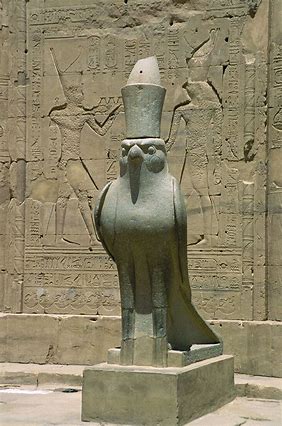Our last Egyptian Temple, located in Edfu, was also the most complete, after being buried for centuries under the sand. It honors Horus with several giant statues of falcons at the entrance. In ancient Egypt, “the god Horus appeared as a hawk, and was variously the avenger, son of truth, lord of two lands, and god of war.” He was the son of Isis, goddess of marriage, fertility, and magic and Osiris, god of peace and prosperity. As legend has it, Osiris’s brother Seth was jealous of the two, so he tricked Osiris to lie in a coffin that he unexpectedly nailed shut, attempted to drown him and ultimately dismembered him, distributing the body parts all over the world. Isis gathered all the pieces of Osiris together and had him embalmed in preparation for the afterlife. She was magically able to restore his life briefly, during which she became pregnant with Horus. Horus eventually fought Seth to the death in an effort to avenge his father but lost his eye in the process, now a powerful talisman in Egyptian mythology.
We continued to sail our Nile River pathway back towards Cairo, passing through the Esna ship locks shortly after lunch aboard the Ra. As we pack our bags for tomorrow’s disembarkation, my wife continues to negotiate with a vendor tied to the side of our boat. He has thrown several scarves on our top-floor balcony in a last-ditch effort to sell his wares. Unfortunately, one of them fell in the water – the cost of doing business – despite her lack of interest. I told you these vendors were like the hawk, relentless.

Leave a Reply